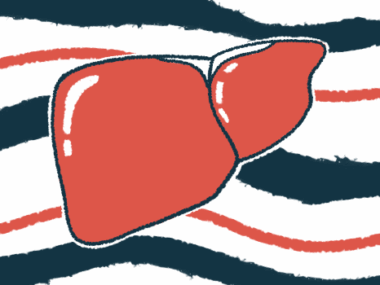Seladelpar eases liver damage, itch in primary biliary cholangitis
ASSURE is evaluating 5-year safety and efficacy in up to 500 adults
Written by |

One year of treatment with Gilead Sciences’ seladelpar normalized biomarkers of liver injury and rapidly reduced itch for most people with primary biliary cholangitis (PBC) in an ongoing, long-term Phase 3 clinical trial called ASSURE.
The interim findings were presented at the recent Digestive Disease Week 2024 Conference in Washington, D.C., by Cynthia Levy, MD, professor of medicine at the University of Miami.
“The initial data from ASSURE further support the efficacy and safety profile of seladelpar observed across the robust development program and continue to indicate that seladelpar has the potential to be a best-in-class therapy that could help transform treatment for people living with primary biliary cholangitis,” Merdad Parsey, MD, PhD, chief medical officer at Gilead Sciences, said in a company press release. Gilead recently acquired the therapy’s original developer CymaBay Therapeutics.
Interim results from the open-label ASSURE study (NCT03301506), along with final data from two placebo-controlled Phase 3 trials — RESPONSE (NCT04620733) and ENHANCE (NCT03602560) — supported a request to the U.S. Food and Drug Administration for seladelpar’s approval for PBC. The application was granted priority review and a decision is expected by Aug. 14. Similar applications are undergoing review in the European Union and U.K.
“The PBC community has been waiting for new treatments that help slow the progression of their liver disease as well as address difficult symptoms like pruritus [itching] that can have a significant impact on their quality of life,” Parsey said. “We are excited to offer a new option for this community as we work to bring seladelpar to people living with PBC, if approved.”
PBC is an autoimmune disease wherein the bile ducts, the tubes that transport the digestive bile fluid from the liver to the intestines, are chronically inflamed. As a result, bile acids build up to harmful levels in the liver and spill over into the bloodstream, triggering pruritis, a common early sign of PBC. The disease occurs more often in women.
Ursodeoxycholic acid (UDCA), sold as Urso and Actigall, is the only first-line treatment approved for PBC in the U.S. When patients don’t respond to UDCA, second-line Ocaliva (obeticholic acid) is an option, but it can worsen pruritus in some patients.
Effects of treatment with seladelpar
Seladelpar is an oral therapy designed to activate PPAR-delta, a protein implicated in PBC-related pathways, including bile acid generation, inflammation, and scarring. For this reason, the therapy should lower liver damage and ease PBC symptoms.
The Phase 3 RESPONSE trial tested seladelpar at 10 mg, taken once daily, against a placebo in 193 PBC patients, ages 18-75, who had an inadequate response or intolerance to UDCA.
Final one-year data showed seladelpar outperformed the placebo in the proportion of patients who achieved a clinically meaningful biochemical response (61.7% vs. 20%). This was defined as blood levels of alkaline phosphatase (ALP), a marker of liver damage, less than 1.67 times the upper limit of normal and at least a 15% level decline from the study’s start, along with normalization of blood bilirubin levels, another liver damage marker.
Seladelpar also significantly reduced moderate to severe pruritus relative to the placebo after six months and this was sustained for a year.
ASSURE is evaluating the therapy’s five-year safety and efficacy in up to 500 adults with PBC who participated in previous seladelpar trials. Although RESPONSE participants were also enrolled in ASSURE, they were not included in this interim analysis and will be reported separately, according to Gilead.
The analysis included 174 patients who had a mean age of 59. Nearly all were women (94%) and were receiving UDCA treatment (97%). Most had at least a one-year gap between completing a previous seladelpar trial (either receiving seladelpar or a placebo) and enrolling in ASSURE.
A total of 148 patients (85%) completed at least a year of treatment and 70% of them achieved a clinically meaningful biochemical response. ALP levels dropped by a mean of 44%, and 37% of patients achieved ALP normalization.
Among the 20 patients who completed two years of treatment, 70% had a clinically meaningful biochemical response and 25% achieved ALP normalization. Seladelpar also was associated with reductions in the levels of other liver damage biomarkers, including total bilirubin by 9%, gamma-glutamyl transferase by 36%, and alanine aminotransferase by 25%.
The 60 patients with moderate to severe pruritus at the start of the study, based on a numerical rating scale between 1 and 10, had less pruritus as early as a month. By six months, their pruritus scores dropped by 3.5 points, which was sustained for a year.
Seladelpar was generally well tolerated, without reports of treatment-related serious adverse events. Discontinuations due to adverse events occurred in 4.6% of patients. It’s safety profile was “consistent with previous studies in PBC,” Levy said.
“We are encouraged by these positive interim results from ASSURE, which are highly consistent with those observed in the … RESPONSE study,” Levy said, noting “seladelpar continues to demonstrate a significant impact on PBC disease in the liver, helps a significant proportion of patients achieve normalization of their ALP and importantly reduces pruritus, which is often a debilitating and unrelenting comorbidity.”







